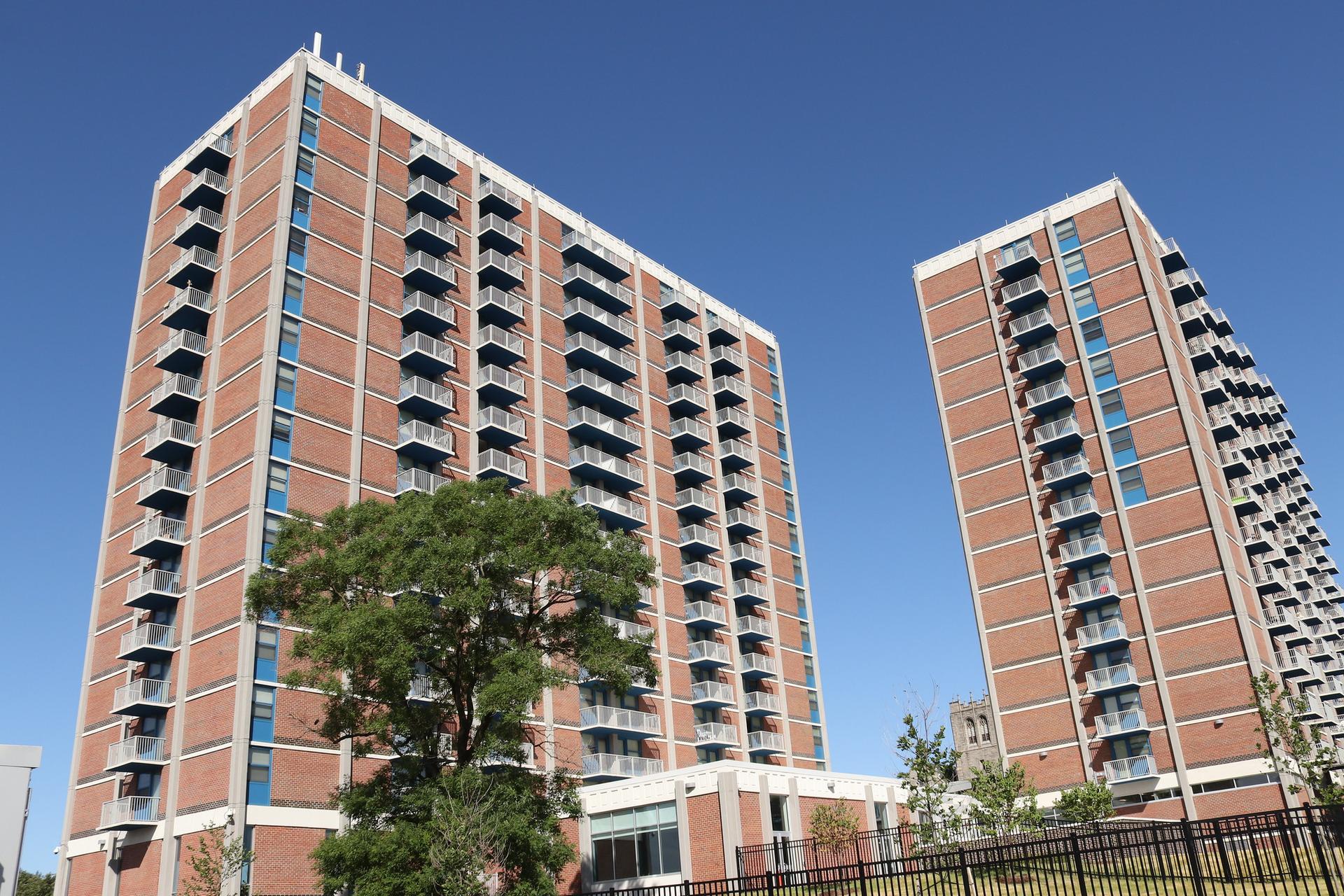Rental housing stock in the US faces huge challenges adapting to climate change
As climate change brings higher temperatures and extreme weather to American cities, rental and affordable housing stock in the US remains largely under-equipped to deal with these new challenges.
The Inflation Reduction Act signed by President Joe Biden in August provides funds and programs for homeowners to take climate action by, for example, installing solar panels and energy efficient heat pumps. But what about renters?
Renters typically use one third more energy per square foot than homeowners because landlords often don’t get a financial return on installing expensive upgrades to improve insulation and HVAC efficiency. And many renters are low-income people who can not afford higher energy costs.
But, according to Todd Nedwick, senior director of sustainability policy at the National Housing Trust, there are ways for people living in rental housing to go greener, save energy costs and guard against heat waves and other climate related risks.
“The Inflation Reduction Act included a $1 billion program specifically targeted to HUD housing stock that will allow building owners to invest both in the energy efficiency of the building as well as improve resilience,” Nedwick says.
Programs in the Inflation Reduction Act also provide rebates to both single-family and multi-family building owners to encourage them to invest in energy efficiency and convert existing fossil fuel-burning equipment to all electric, Nedwick adds.
“[I]n Washington, DC, where I’m from, buildings account for 75% of greenhouse gas emissions,” he points out. “So we’re not going to address climate change if we’re not addressing the existing housing stock. Climate policy is housing policy.”
Resilience upgrades include measures such as flood-proofing, elevating essential equipment above ground level to prevent disruption to power, and adding battery storage to buildings so residents still have a source of power if the electrical grid goes down.
Protecting residents from extreme heat is another important resilience strategy, Nedwisk adds. This includes adding cool roofs to buildings, for example, in order to reflect sunlight and prevent buildings from getting too hot.
“[I]n many cases, older buildings might not have air conditioning,” Nedwick points out. “And so, in addition to providing incentives for reducing energy consumption, we also need to be providing resources to help building owners upgrade their buildings and install air conditioning to protect residents from extreme heat. We’re seeing extreme heat disproportionately impact people of color because they don’t live in areas that have invested in and have the infrastructure to protect from rising temperatures.”
Building owners can also access energy efficiency programs offered by local utility companies, which help offset the cost of making building upgrades, Nedwick says. These are important resources for building owners, especially owners of affordable housing, who typically have limited cash flow to pay the upfront cost of major upgrades.
Some cities are also implementing policies such as energy performance standards for buildings, which require owners of poor performing buildings to make upgrades that reduce energy use.
“So, we are seeing both carrots and sticks,” Nedwick says. “I think what works most effectively is when you combine the two. [I]f you’re going to have a building energy performance standard and require building owners to make upgrades, especially in affordable housing, providing resources to the owner to actually pay for some of those costs is pretty important.”
Energy efficiency and better weatherization aren’t the whole story, however. Climate change is increasing the danger to buildings from hurricanes, flooding and wildfires. According to Harvard University’s Joint Center for Housing Studies, 40% of rental housing stock in the US is at risk of damage from climate disasters.
Most of the country’s older rental housing stock is not built to withstand these impacts, Nedwick says.
“And we see that where there are the greatest risks in terms of potential climate events, those areas of the country are typically disproportionately Black, Hispanic, and low income individuals,” he points out. “So we have to fortify the existing rental housing stock to withstand climate events and protect existing residents.”
“In this country, we spend so much more funding on disaster recovery than we do disaster preparedness,” Nedwick continues. “And we’ve found that…the disaster recovery funding often doesn’t reach renters and owners of rental housing. Typically, disaster recovery programs allocate funding based on the extent of the economic disruption from a climate event, and that often correlates with higher property values. As a result, a lot of the disaster recovery funding, especially through some of the FEMA programs, really [doesn’t] reach affordable housing residents and owners in an equitable way.”
Related: Building high-rises, hotels and stadiums out of wood — for climate’s sake
This article is based on an interview by Jenni Doering that aired on Living on Earth from PRX.
